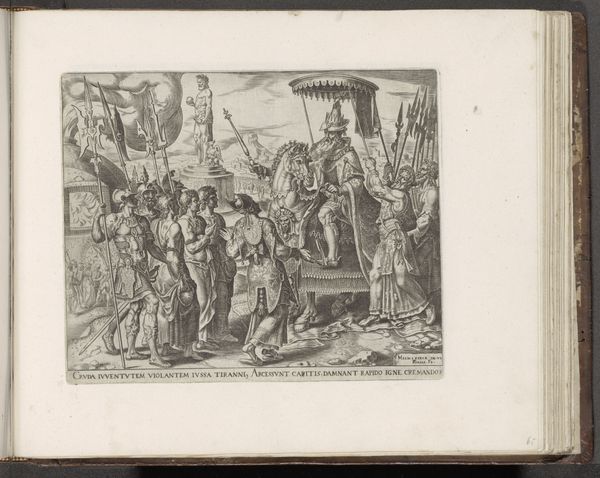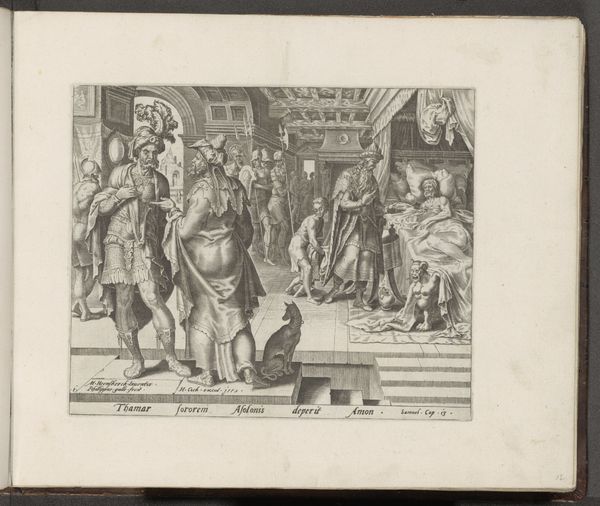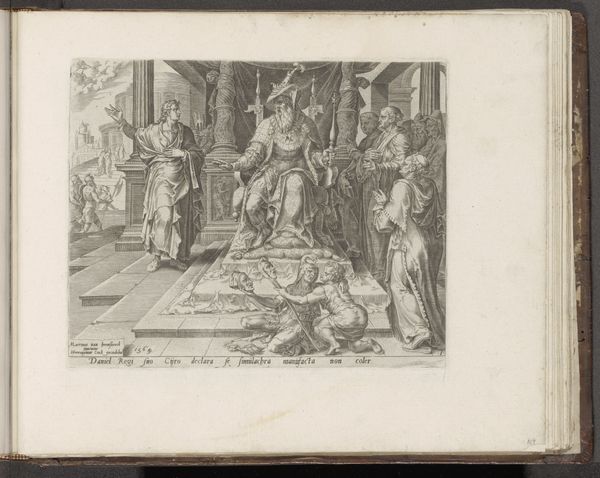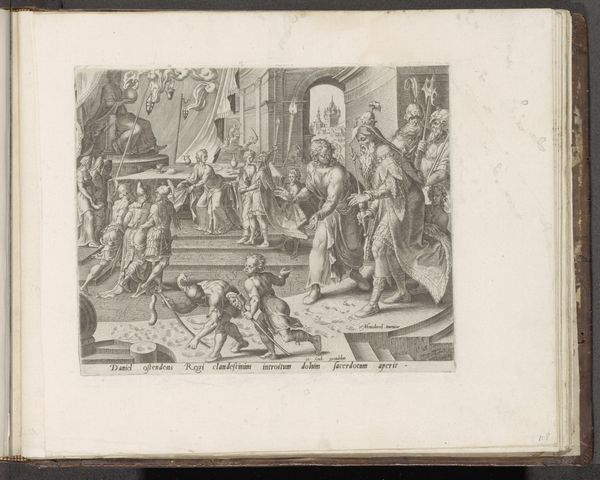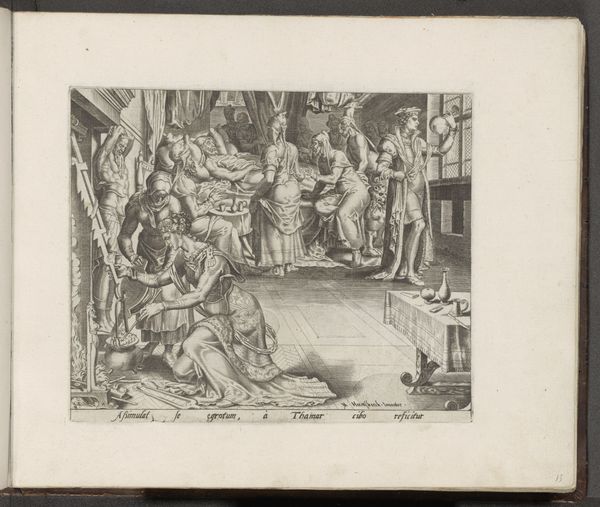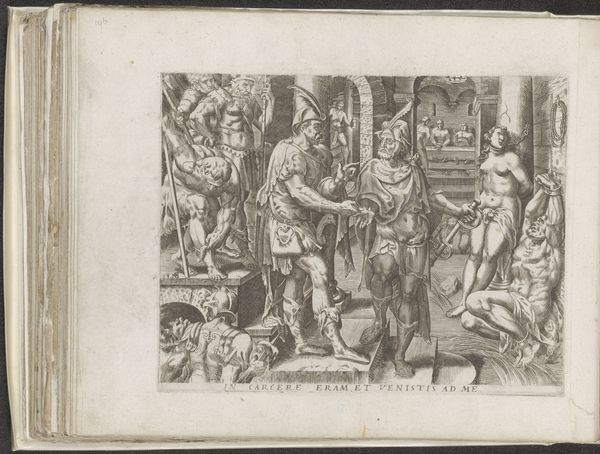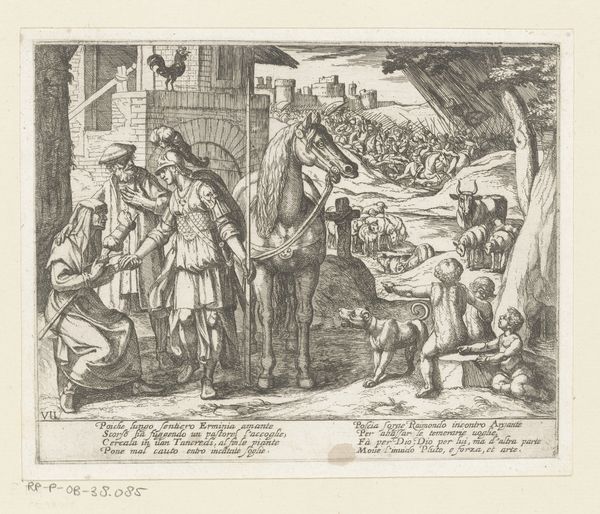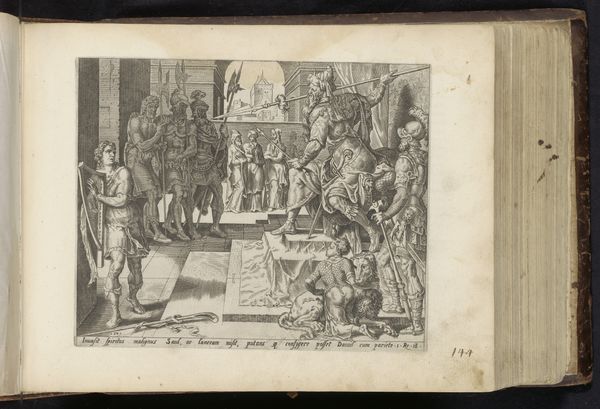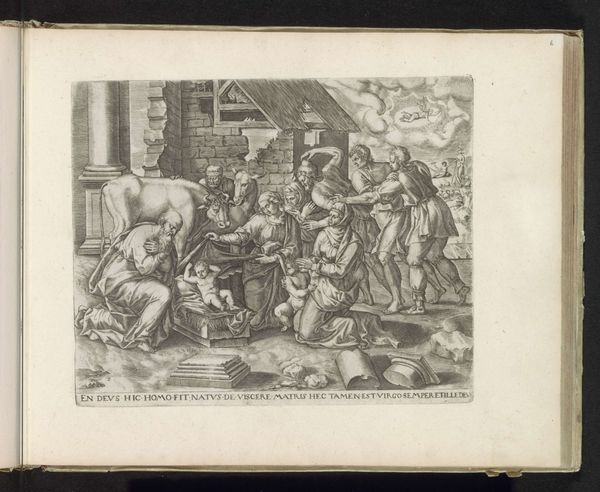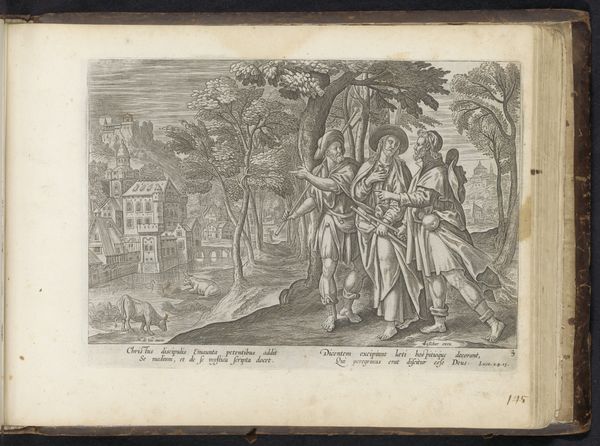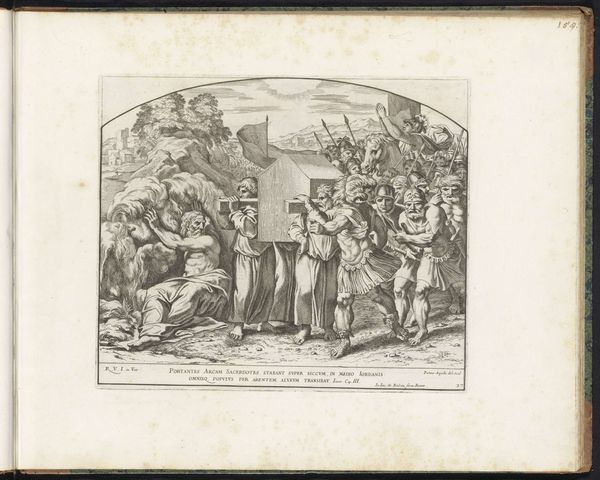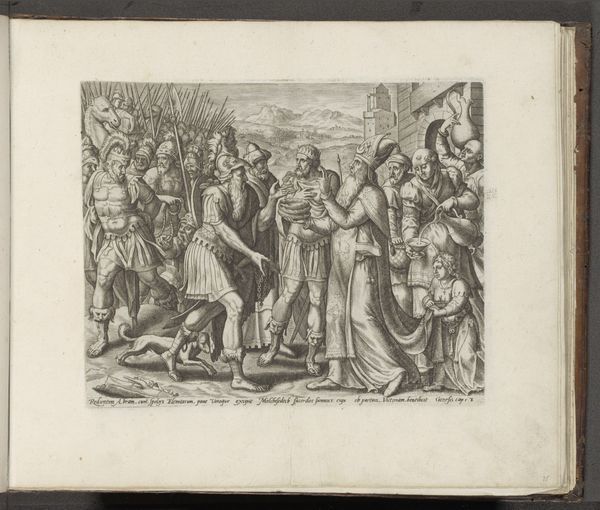
print, engraving
#
aged paper
#
toned paper
#
narrative-art
# print
#
pen sketch
#
sketch book
#
personal sketchbook
#
pen-ink sketch
#
pen work
#
sketchbook drawing
#
history-painting
#
northern-renaissance
#
sketchbook art
#
engraving
#
pencil art
Dimensions: height 201 mm, width 248 mm
Copyright: Rijks Museum: Open Domain
Curator: Welcome. Here we have a 16th-century engraving by Philips Galle, dating between 1559 and 1579, entitled "Achab toont berouw na de vloek van Elia" which translates to "Ahab shows remorse after the curse of Elijah." Editor: Immediately striking is the tonal range. Galle uses tightly controlled cross-hatching to evoke texture and spatial depth, wouldn't you say? There's an almost velvety quality to the shadows. Curator: Absolutely. It's a fine example of Northern Renaissance printmaking. Galle was operating in Antwerp at a time of considerable religious and political upheaval, and the depiction of Old Testament scenes allowed for commentary on contemporary issues, often subtly veiled. Editor: Tell me more, what statements can this art make? It strikes me that the architecture seems almost dreamlike and hyperrealistic. The perspective draws the eye. Curator: Consider the figures, their costumes. Ahab, despite his crown, appears humbled before Elijah. This reflects a common theme of the period: the fallibility of earthly rulers before divine law. Galle uses a clear visual language to instruct and, perhaps, subtly critique those in power. We mustn't forget the importance of these engravings circulating widely and reaching broad audiences in society at that time. Editor: True, and consider the composition again. Elijah’s commanding gesture, and Ahab’s almost performative repentance. It begs questions about the performativity of power, and also genuine conversion, doesn't it? Even down to the detail of those figures in the background, who might be whispering of Achab. Curator: It's a nuanced interpretation of a well-known biblical story, that resonates deeply within the complex social fabric of 16th century Europe. Thank you for the fresh reading of the work! Editor: My pleasure. Looking closer reminds me that art can speak volumes without ever uttering a word. The way the light falls alone could give us more clues!
Comments
No comments
Be the first to comment and join the conversation on the ultimate creative platform.
